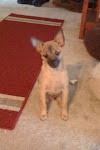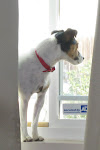Shenyang, China features a variety of vehicles that creates a confusing mobile traffic jam through which the majority of motorists wander unscathed. But don’t ask me how. It took the first week of abject fear without accident before I could enter a cab and not cower in the corner. Looking up at a decrepit city bus from the back seat of a cab driven by a driver determined to cut the bus off is not for the faint of heart.
Let me explain what I’ve learned, beginning with the basic rules of the road. First, and foremost, any driver in any vehicle has the right to do whatever s/he wants to do on the road. Signs, signals, and striping are simply suggestions for those drivers who lack the confidence to pick a destination and then get there, come what may in interference. Thus, buses, construction dump trucks, privately-owned vehicles, pedicars, small, three-wheeled cars the size of a typical living-room barkalounger, donkey-drawn carts and repurposed bicycles all compete for road space with the taxis, which by sheer numbers command attention. The only commonality between this polyglot of vehicles is that survival depends on one’s vehicle’s horn: even the burro-drawn cart must have a horn.
The horn provides access to multi-maneuvers on the road, bypassing either the rules of the road or common usage agreements. Thus, in the states, a two-lane pathway would, at any given time, have a maximum of two vehicles abreast. In China, that is a minimum; the maximum lane usage practice incorporates the parking/curb lane, the first striped lane, the lane centered over the first stripe, the second striped lane, and the lane centered over the double-striped lane that separates oncoming from ongoing traffic. The horn announces where a vehicle is and presages that it’s going to be moving about the traffic pattern, but it is up to the other drivers on the road to be alert and move out of the way. Failure to drive defensively while aggressively pursuing one’s ultimate destination results in a traffic accident.
Smaller vehicles defend their size against the biggest vehicles on the road by stationing themselves near either the front or the rear bumper of the much larger vehicle. When the traffic flow begins, the small vehicle beeps its horn, then pulls out into traffic, perhaps feeling invincible and/or protected by the much larger vehicle it’s using to open a hole in the traffic. Based on the relative size differential, I’m guessing that the only way the bus knows there is a far-too-small vehicle hiding from view is past experience. One person can squeeze into these micro-cars, but there is a “back seat” with a passenger holding on for dear life. The pedicabs have been motorized (they used to be bicycles and still look like enclosed bicycles), but I saw few with any kind of lights aboard, which minimizes being seen by other vehicles on the road, especially after sunset. Regardless of the relative safety of being in either of these two vehicles, it’s somewhat better than being a pedestrian.
There are few traffic lights in Shenyang; hence, traffic continues to scurry about helter skelter. A pedestrian risks life and limb each time s/he crosses a street because the vehicular traffic does not stop for man, woman, or child. Ever. As the cabs dart about the roads, there, perched on the center “no crossing” lines are temporarily halted pedestrians who have been unable to cross the street fully. If the cab is using the “center line” as another passing lane, it behooves the pedestrians to be especially alert to line-sharing. On one of the few streets with a pedestrian lane, traffic becomes even more aggressive because that is wasted lane space for motor vehicles, as well as wasted driving time, so they ignore the pedestrians with disdain for their selfish mindset in claiming that crossing lane as their own.
By the end of the first week of cabbing around Shenyang, I felt better at being surrounded by steel and steadfastly refused to even try to cross the street. By the end of week two, I was able to conquer my fear of crossing some of the less busy streets, but it took nerves of steel to do so, especially because drivers simply do not react as if any of the more civilized road rules apply to them. A right-hand turn at a corner can be made from the double yellow “no passing” line farthest from the right-hand curb – as long as the horn is administered properly and profusely. A U-turn can be made across the double yellow “no passing” line into on-coming traffic as long as the horn is used to indicate … something is happening on the road somewhere, so look out for it. And, of course, passing another vehicle is simply one of the rules of the road, and if the car was intends to pass fails to heed the horn, muscle against the front bumper and just keep coming on: the car being nosed out doesn’t want the hassle of a traffic accident and will move out of your way.
People who have lived in and/or visited major cities tell me that this craziness is universal, but that doesn’t make it any less frightening. It does, however, explain some of the driving I’ve witnessed on the California freeway systems! People who move here from other areas disregard line striping, even on freeways, but here? We call them statistics.
Saturday, July 13, 2013
Subscribe to:
Post Comments (Atom)





1 comment:
This sounds similar to stories I've read about when the Model T suddenly was affordable and there weren't any laws or instructions for new drivers. They pretty much went where they wanted, weaved all over the road, and made their own rules. I imagine that, like early America, China and Shenyang will have to enforce some sort of strict road rules and severe penalties and get a bunch of people into classrooms to change the culture and get things working in a reasonable manner.
Post a Comment